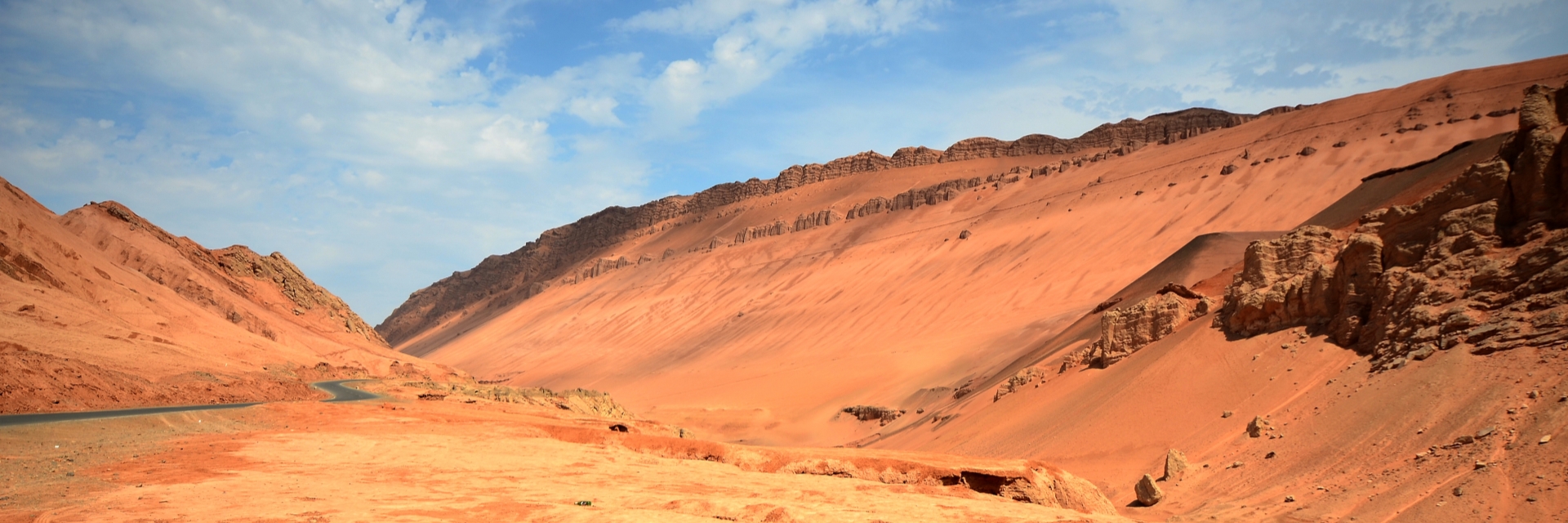
Flaming Mountain Wonders | Epic Scenery of the Silk Road
By Leo
Hello, I’m Leo, having travelled on Silk Road for more than 17 times in the past 20 years. I always tell people that visiting Flaming Mountain in Turpan, Xinjiang was an unforgettable experience. This iconic landmark on the ancient Silk Road instantly captivated me with its blazing red peaks and rich cultural history. Walking here, I experienced the perfect blend of natural beauty and historical depth, all connected to the famous legends of the Monkey King. In this guide, I share professional insights to help you explore Flaming Mountain in Xinjiang and fully appreciate its unique charm and heritage.
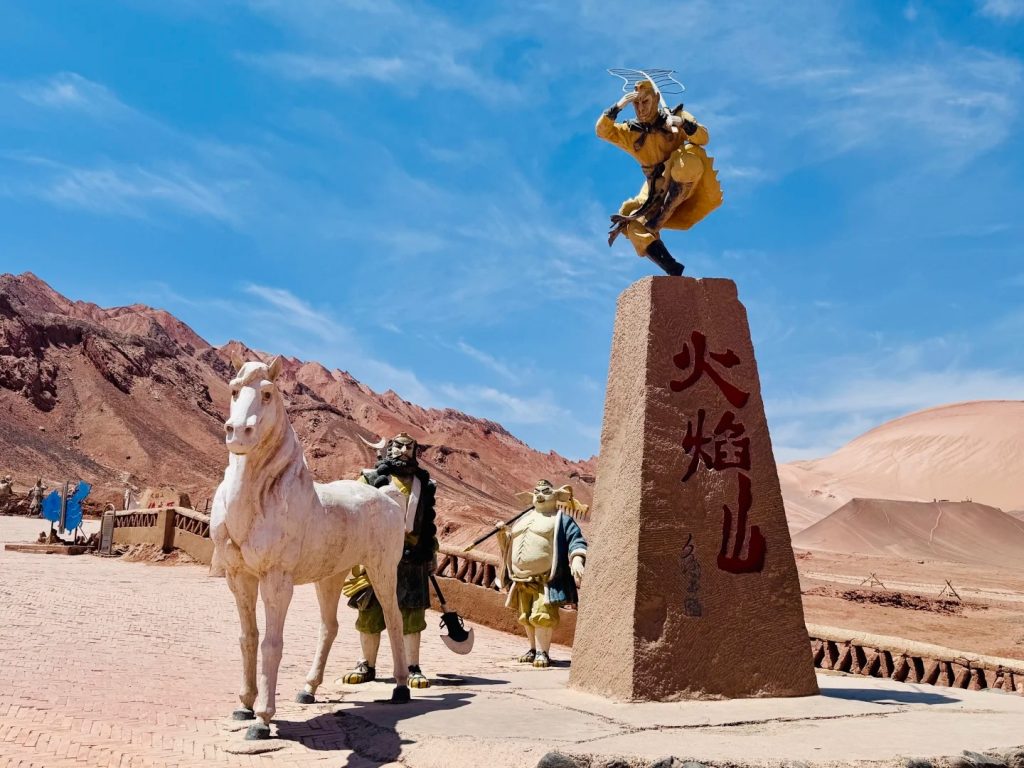
Where Is Flaming Mountain?
Flaming Mountain, located in the Turpan Basin of Xinjiang, China, is a key landmark on the ancient Silk Road. Known for its unique “flaming” red landscape, it showcases both natural beauty and rich cultural history, reflecting 2,000 years of Silk Road exchanges.
Why Visit Flaming Mountain?
- Natural value: Unique “flaming” red landscape rarely seen elsewhere.
- Cultural value: A living witness to 2,000 years of Silk Road cultural exchange.
The blazing peaks and sculpted rock formations are shaped by millions of years of sunlight, wind, and rain.
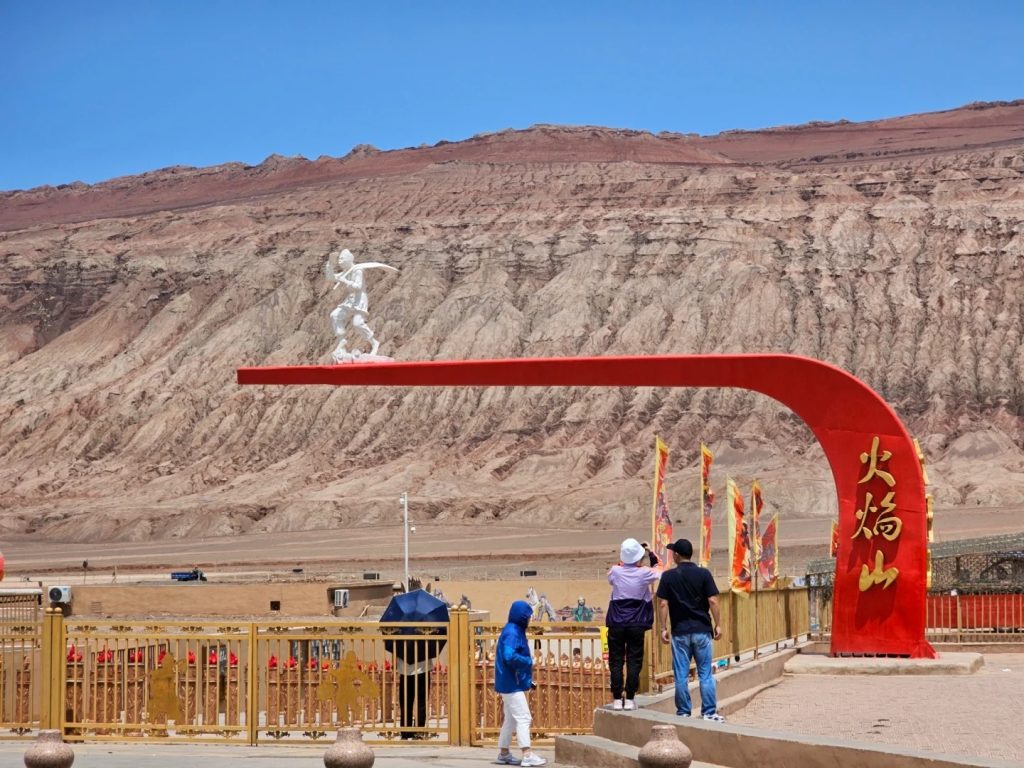
Natural Wonders: Why It’s Called “Flaming Mountain”?
Flaming Mountain stands out as one of China’s most dramatic desert landscapes. Its blazing red peaks, intense summer heat, and naturally sculpted rock formations create a scene both powerful and unforgettable. Visitors can witness the mountain’s unique colors and shapes, shaped over millions of years by sunlight, wind, and rain.
Extreme Heat: The Hottest Mountain in China
During summer, daytime temperatures often exceed 40℃, with the ground reaching 70–80℃. This extreme heat is caused by surrounding deserts and basins that trap the sun’s energy. Visitors can even place eggs directly on the hot sand, letting the intense desert heat cook them—a truly unique experience.

Fire-Like Appearance: Red Sandstone’s Magic
Mountain material: Composed of Flaming Mountain red sandstone formed 100 million years ago
Color change rule:
- Morning/evening: Sunlight shines obliquely on the mountain, turning it bright red (like burning flames)
- Noon: Direct sunlight makes Flaming Mountain deepen to dark red, still retaining a smoldering look
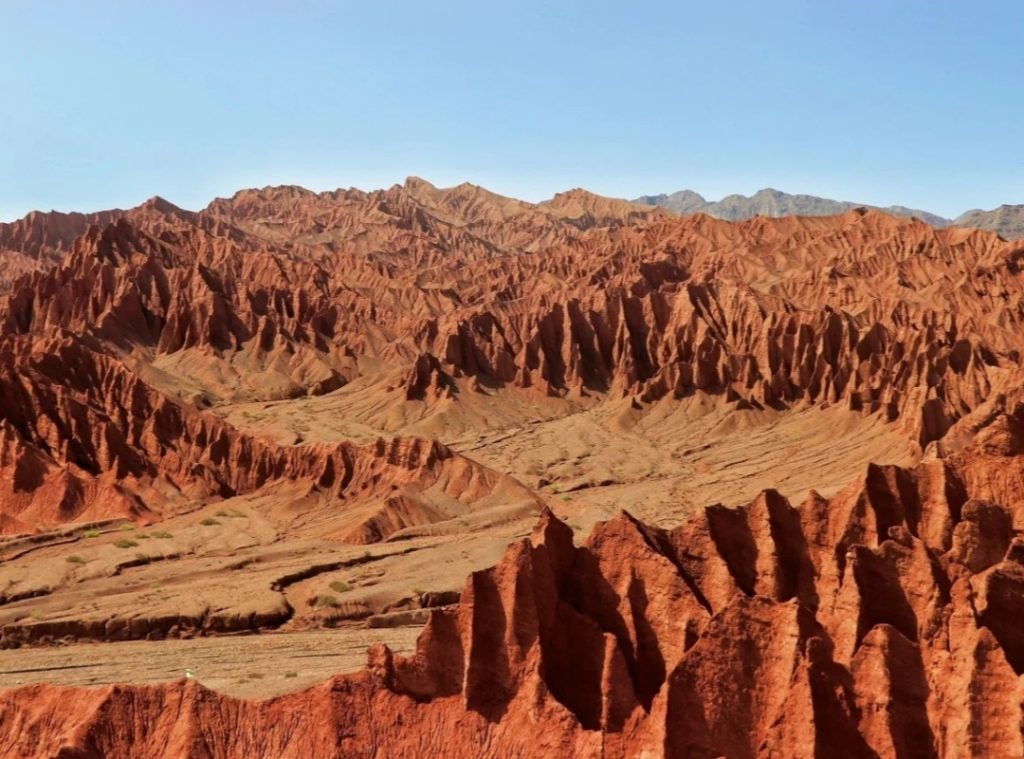
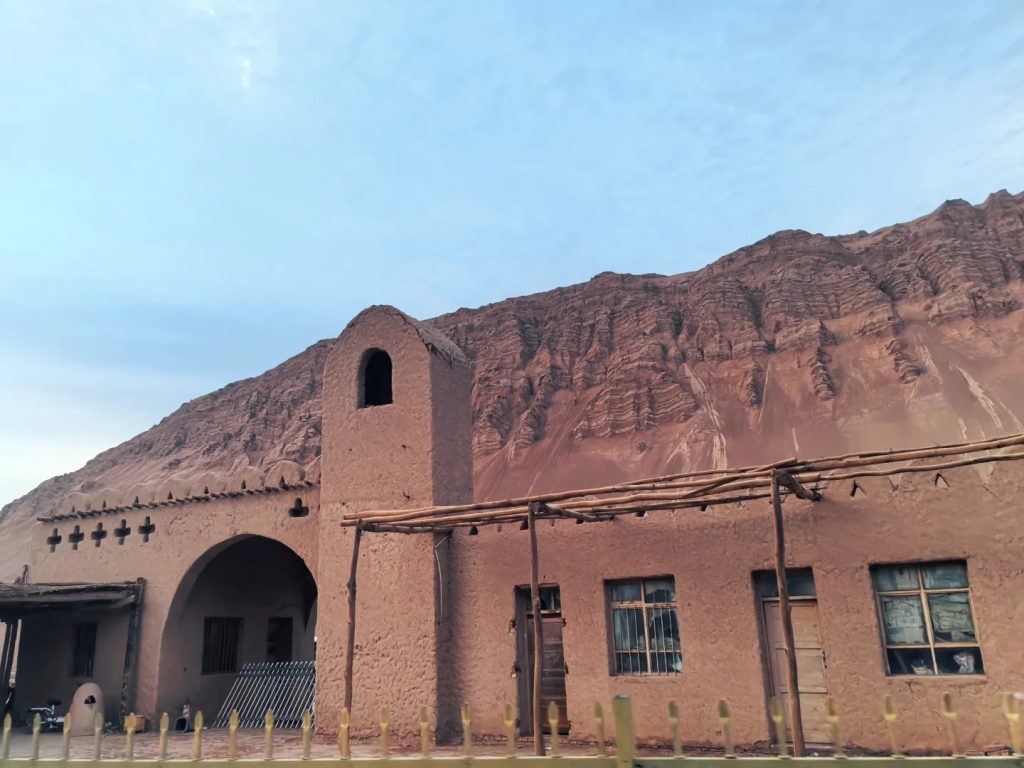
Unique Rock Landscapes: Carved by Nature
Forming force: Wind and rain erosion over millions of years
Typical shapes:
- “Lion Rock”: Looks like a lion lying on the mountain
- “Camel Rock”: Resembles a camel walking on the Silk Road
- “Flaming Peak”: The highest point of the mountain, with a sharp shape like a flame tongue
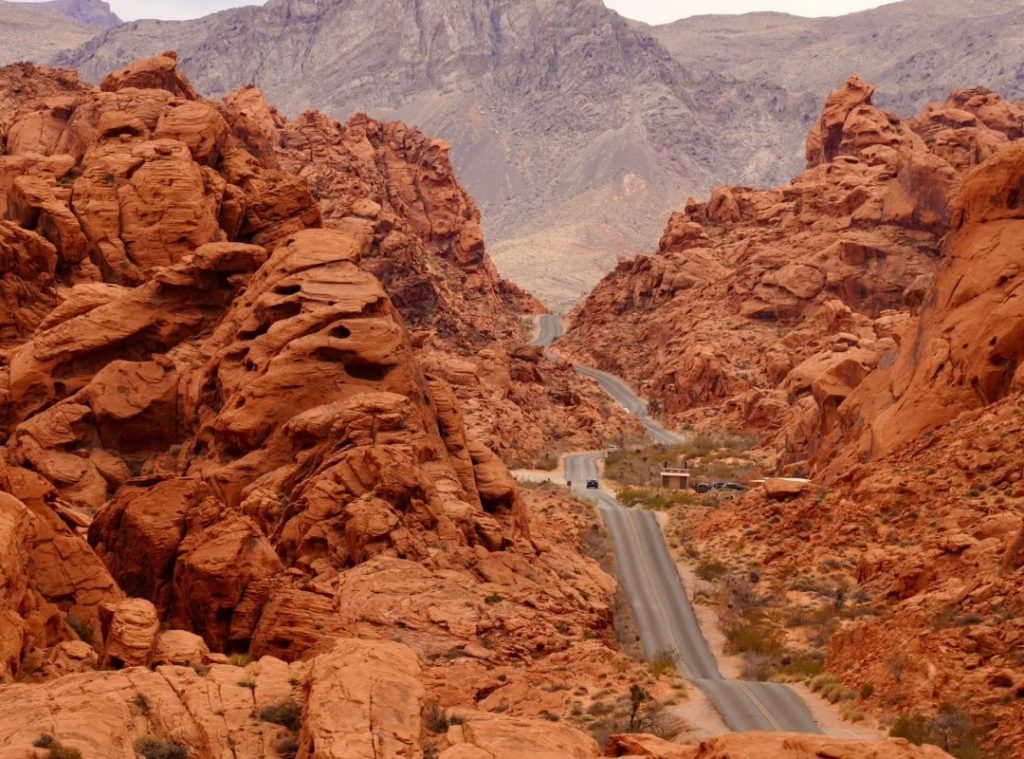
Practical Experience Guide: How to Enjoy Flaming Mountain
Flaming Mountain offers more than dramatic scenery—it’s a hands-on experience. Visitors can explore iconic spots, walk along red sandstone trails, and learn about its Silk Road history. With the right timing, clothing, and safety precautions, every visit becomes both memorable and enjoyable.
Must-Visit Spots at Flaming Mountain
1. Giant Thermometer Scenic Spot:
- Location: Entrance of Flaming Mountain Scenic Area
- Function: Displays real-time ground temperature (a popular photo spot)
- Tips: Take photos in the morning to avoid overexposure from strong midday sunlight
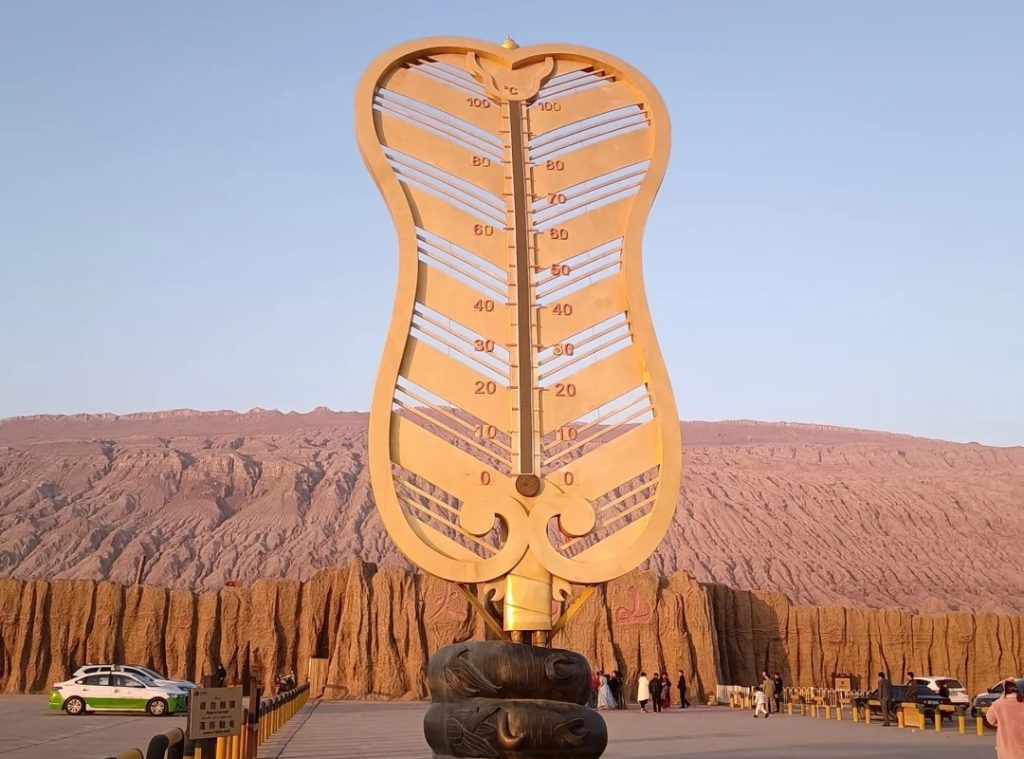
2. Red Cliff Trail:
Length: About 1.5 kilometers (easy for most tourists to walk)
Highlights:
- Walk close to the red sandstone and touch its rough surface
- Observe rock shapes up close (guide signs along the trail introduce each shape)


3. Desert Sand Therapy:
Tips: Wear light, breathable clothing and bring a towel to sit or lie on. Early morning or late afternoon is best to avoid the intense midday heat, and always stay hydrated.
Experience: Lie down or partially bury yourself in the warm desert sand. The natural heat penetrates deeply, soothing muscles and joints, promoting relaxation, and offering a unique desert wellness experience.

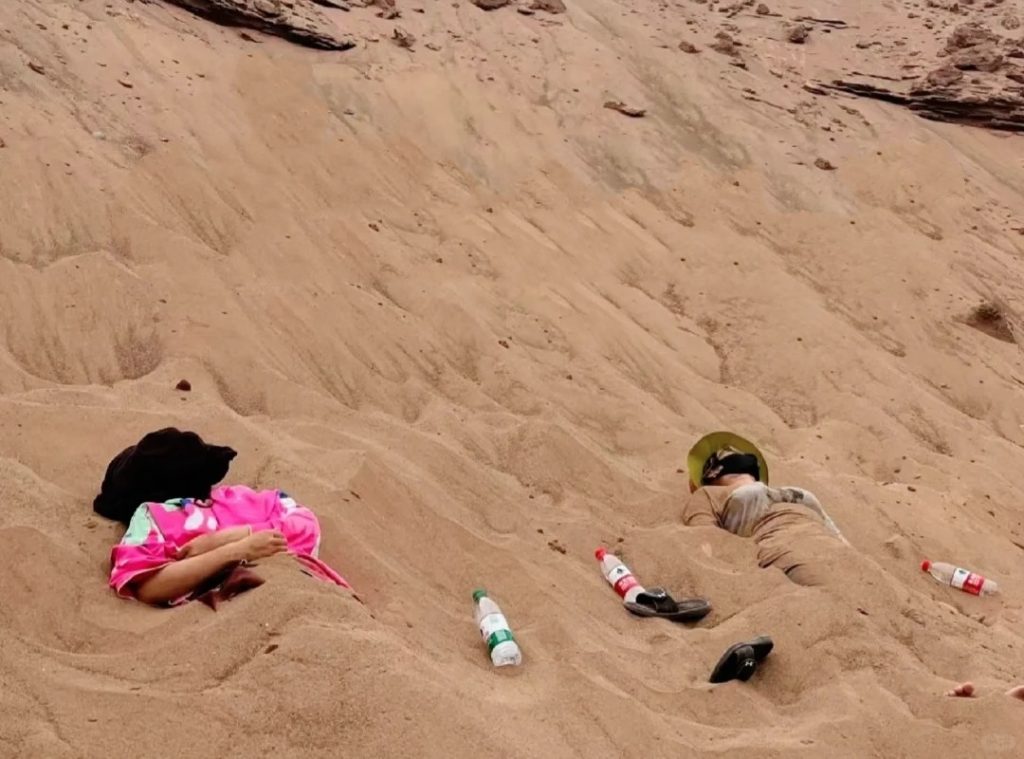
Best Time to Visit Flaming Mountain
Daily time: Sunrise (6:00-7:00) or sunset (20:00-21:00)
- Reason: The “flaming” color of the mountain is the most obvious at these times
Monthly recommendation: April-May or September-October
- Reason: Avoids the extreme heat of June-August and the cold of November-March
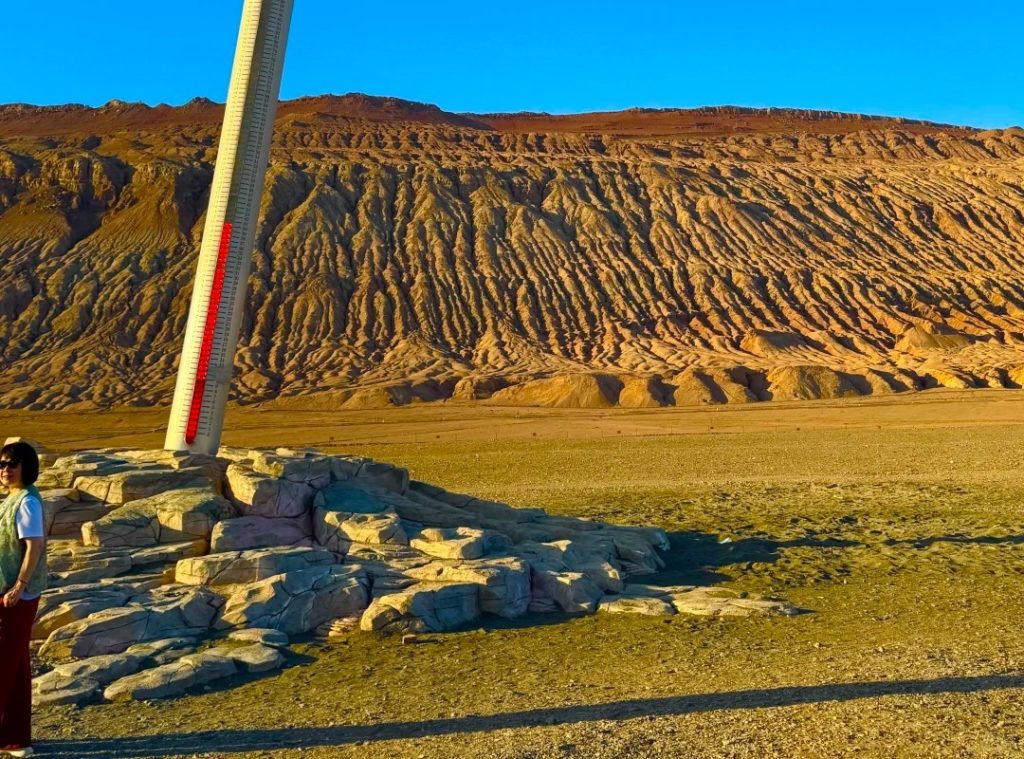
Flaming Mountain Experience Tips
- Clothing suggestion: Wear light, breathable long-sleeved clothes (to prevent sunburn)
- Item preparation: Bring a hat, sunglasses, and sunscreen (UV rays are strong)
- Safety note: Do not touch the rock surface with bare hands at noon (to avoid burns)
- Transportation: Take high-speed rail to Turpan, then taxi or rideshare to Flaming Mountain
Nearby Attractions to Flaming Mountain in Turpan
Flaming Mountain is not only a stunning landmark but also close to other fascinating sites. Visitors can explore Jiaohe Ruins, an ancient Silk Road city, and Karez Well, an ingenious underground irrigation system. Both attractions are just a short drive from Flaming Mountain, making them perfect additions to your Turpan itinerary.

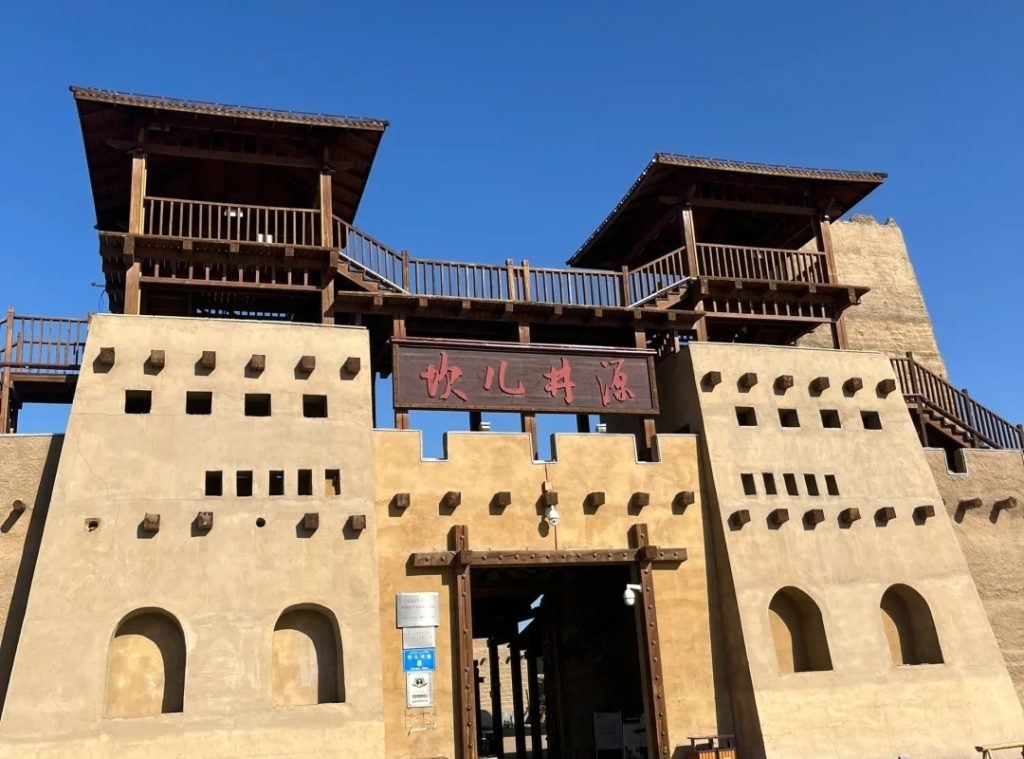
| Nearby Attraction | Description | Distance |
| Jiaohe Ruins | Ancient city ruins near Turpan, showcasing Silk Road history | ~10 km |
| Karez Well | Ancient underground irrigation system unique to Turpan | ~15 km |
The Flaming Mountains offer a unique blend of natural beauty, Silk Road history, and Monkey King legends. Their fiery red peaks and captivating stories create an unforgettable experience along this historic route.